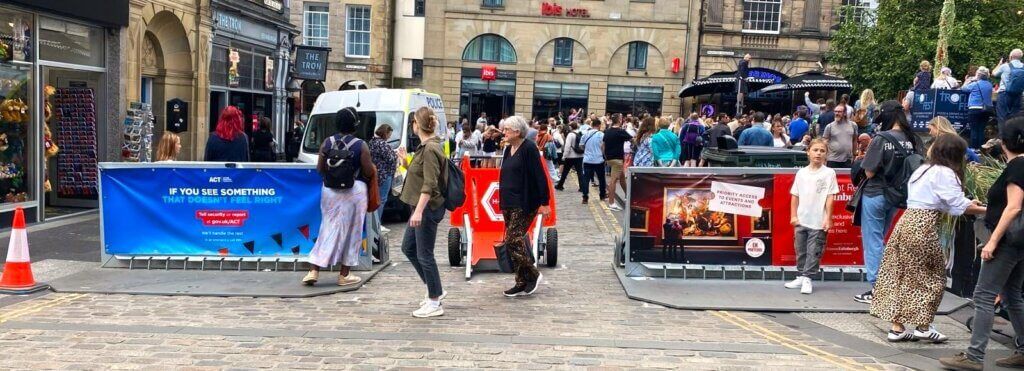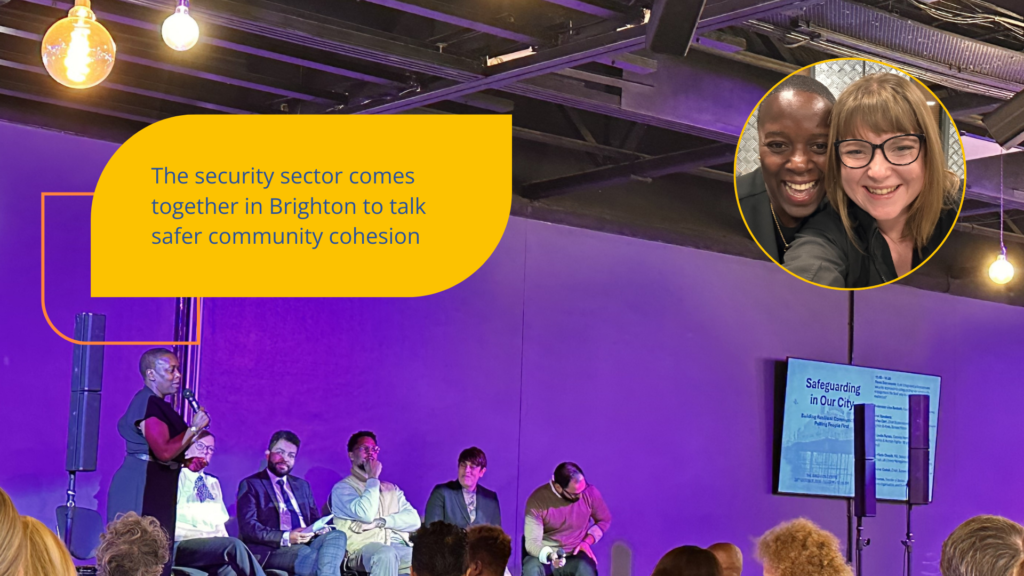Highway Care’s Head of Communications and Marketing, Hayley Terrell discusses the Safeguarding in our City Conference she attended in Brighton this week.
We may be into the darker nights and unpredictable weather of autumn and winter, but with the changing of the seasons comes the excitement of events and nightlife; from Halloween and Diwali this week, to Bonfire Night next, and the festive and New Year events ahead in December.
The discussion across the security sector about how we can enable people to safely enjoy both celebrations in the calendar and days and nights out in the city with friends and family is always a hot topic. This week the inaugural Safeguarding in our City Conference took place in Brighton to provide a forum for those conversations, and I was there to listen and get involved.
A collaborative security community
It was brilliant to see the public sector and private companies come together at an event like this. The police and local authorities were there alongside security specialists from guarding and stewarding providers, through to HVM and perimeter protection companies including Highway Care Security. The day was possible due to the hard work of our hosts Lisa Baskott, Founder & CEO, 2nd Line of Defence and Anita Grant, Assistant Chief Officer, Trust and Legitimacy, Sussex Police. Dave McLaren, Deputy Chief Constable of Sussex Police and T/Chief Superintendent, gave the keynote address on the day, and some of the sector’s key bodies, such as the UKCMA, and representatives of the local community were also represented to share their insights and concerns too.
The purpose of the event – which was free to attend, with the participants giving their time and expertise for free too – was to explore how we can strengthen community resilience and public safety, with effective solutions. Some of those solutions might be physical – such as HVM – some operational – such as security checks at events – and others are about community cohesion and collaborative working to understand and mitigate risks to people’s safety.
There was a clear emphasis on people feeling safe in their community, and Brighton, with its vibrant events calendar, tourist economy, and rich nightlife, was an ideal case study of the need to enhance both safety and perceptions of safety, while enabling people the freedom to come together and do the things they enjoy. The correlation between community cohesion and community safety was highlighted a number of times during the day – both by the speakers and during informal conversations. With the impact of last summer’s attacks and subsequent riots still being felt in Southport, that example of the impact of social disunity on public safety was a reminder that the task at hand is much more complex than physical security.
How safe do you feel?
Physical security was one of the many topics discussed. Although not directly discussed, it was clear to see the link to the importance for Martyn’s Law, now making its way through the parliamentary process, delegates were aware that there is a need to demonstrate that safety and security have been considered, with actions taken to protect people and places. This topic led to an interesting – and surprising – discussion at my table when I asked fellow delegates whether seeing HVM in place and protocols such as bag checks at events made them feel more safe or less so.
If you work in the security or counter terrorism sector, you might be surprised to learn that my fellow delegates responded that seeing additional security in place made them feel less safe rather than safer – apparently because they see it as an indication that their event or location is at higher risk.
The reality is, of course, that a lack of security measures doesn’t mean a lower risk; it may just mean that risk has not been adequately considered and mitigated.

Communicating risk
For communities that feel safer and enable people to come together, we need to ensure that people understand and accept the benefits and rationale of security measures. We don’t want to scare people about risks to their safety, but we do need to communicate that mitigating risk is a positive step to keep them safer.
I came away from the event feeling extremely positive about the security community, the appetite for collaboration and knowledge sharing, and the clear focus on enabling people to enjoy events and crowded spaces safely. And that passion has clearly not been sparked as a response to Martyn’s Law – as valuable and necessary as the legislation will be – but by an awareness of risk and a drive to mitigate it.
Putting security measures in place doesn’t indicate increased risk, it demonstrates risk awareness and mitigation. Part of the challenge is to ensure that’s a message articulated and amplified in a way that will enable all stakeholders to accept and value security measures, such that they feel safer.


